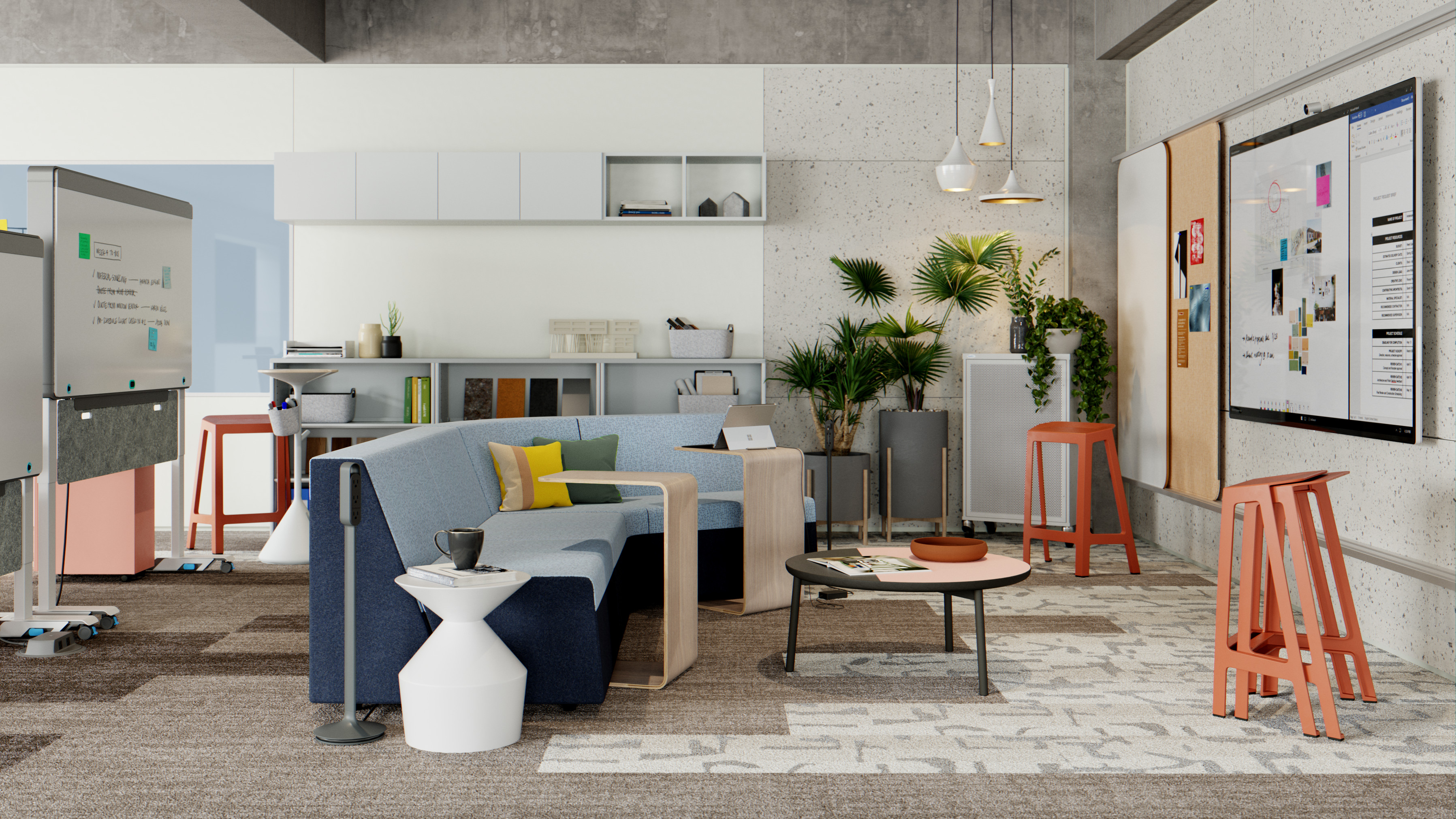In the last couple years, work and education has undergone a tremendous shift, including toward more hybrid approaches. This necessitates reassessment, reset and reimagination these experiences. But change of such magnitude can be an overwhelming proposition, with implications for everything from attraction and retention to collaboration, resourcing and budgets.
The use of pilots can show the way forward. They are small, experimental work and learning settings in which to test new ideas — in space design, furniture, technology, new ways of working and new behaviors. In a pilot, a small group of employees, faculty, or students move into a test space and use it as their primary work area during a trial period.
Pilots give the opportunity to test new concepts, learn what works well and discover what needs to be refined or reconsidered as you seek to improve and evolve the work experience.
Benefits
- Reduces risk by testing workplace or learning concepts on a small scale before a larger investment.
- Uncovers challenges or potential pitfalls you may not have considered, exposing the unknown and helping you to anticipate responses.
- Embraces action and signals evolution and positive forward steps.
- Accelerates the journey to a better work/learn experience by engaging people in the pilot process.
- Reduces resistance and increases buy-in among employees, faculty, and students by giving them a voice as the pilot space is tested and refined.
- Communicates that you’re open to exploring new approaches toward improving the learning experience.
- Contributes to a culture of experimentation and learning.
- Communicates investment in the experience which can contribute to attracting and retaining talent.
The Pilot Process
Though no two pilots proceed in precisely the same way, they all share steps in common. Clarity of purpose is first. Why are you piloting? What do you hope to learn? How will you measure success and apply the lessons learned?
Establish tangible goals to align expectations among stakeholders. Perhaps your goal is to test a new way of working or a new work environment. Perhaps you’re using a pilot to inform desired cultural change. Maybe you’re considering new technology, exploring new approaches to collaboration or testing alternative settings for a specific work mode.
Other steps include planning the details of the pilot, setting up the space, installing furniture and orienting occupants to ensure a favorable, productive experience. You will also want to establish parameters for periodic checkups to see what is and isn’t working, gather feedback and ensure people feel heard.
Just as pilots are tests, it’s critical that all involved understand it won’t be “perfect”. The idea of a pilot is to test learn and iterate. Inherently, this means that some ideas will be “wrong” – and that’s okay.

A Holistic Approach
A pilot shouldn’t be only about the physical work environment. It should include a scope broad enough to test new ideas for improving the entire experience. Focus on “behavioral piloting” which looks at a full range of the ways people interact in their work, in the space and with each other.
The purpose of a pilot, after all, isn’t just to design an attractive work or learning environment, but a space that catalyzes desired behavioral change. Space and behavior are inextricably linked in that place shapes behavior, and behavior over time defines culture. This symbiotic relationship between culture, process, tools, and space is illustrated in the work experience model below. When you’re considering a pilot, ask yourself key questions in each of the four areas — culture, process, tools and space.
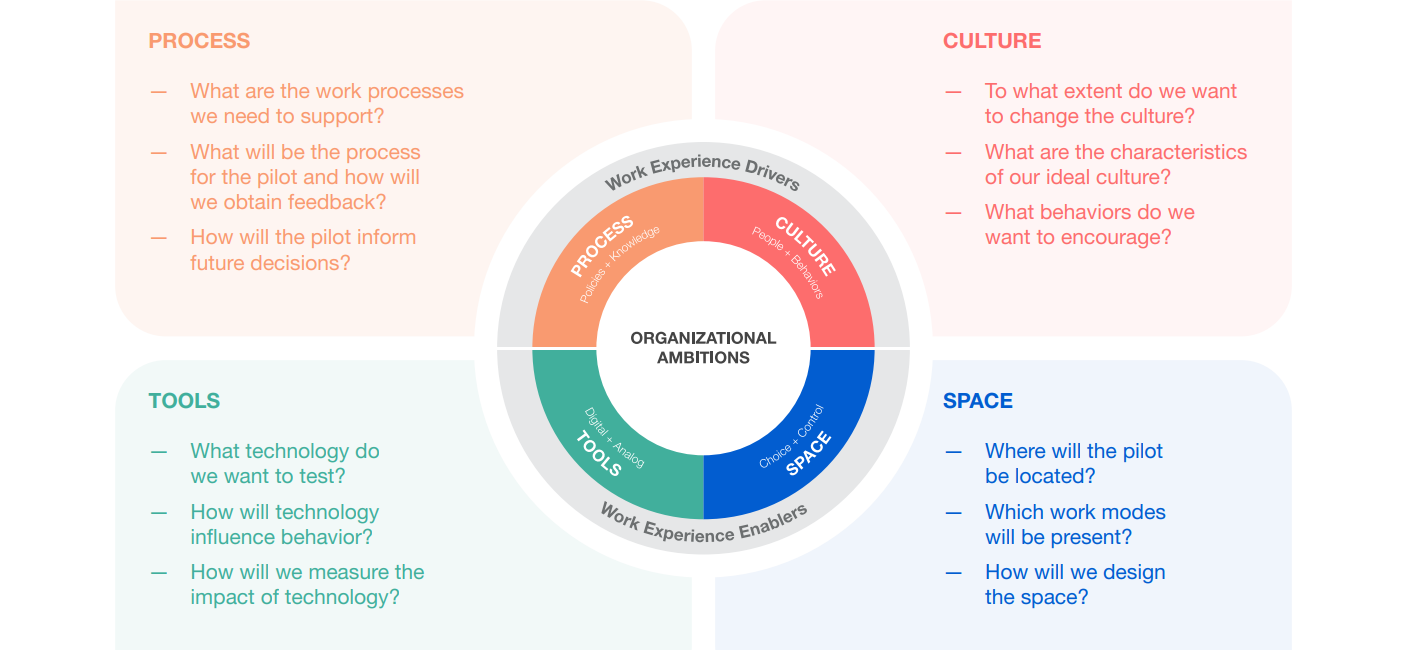
Audiences: Characteristics of the “right” user group
The selection of the “right” user group is critical to a successful pilot.
- Willing. Willingness to participate in the pilot is critical. The users of the space should have an open mind and be willing to give you honest feedback. In most cases, they will be testing new ways of working as well as new technologies and processes. “This sounds interesting. I’m excited to try it!”
- Credible. Look for a team that is respected within the organization. Any change will be met with some skepticism and it’s easy to disregard experiences and measurements that involve groups that aren’t known or liked. If the team is respected, it’s more likely that other groups will have confidence that they will have similar results. “I know that group and value the work they do. I believe we could have similar results.”
- Relatable. The work of the group is like other groups in the organization. Select participants with similar work responsibilities, work processes and roles to others in the organization. You want to reduce the complaints of “it worked for that group but won’t work for mine because we are different.” Instead strive for “We do similar work to that group. I believe my results and experiences will be similar to the pilot group.”
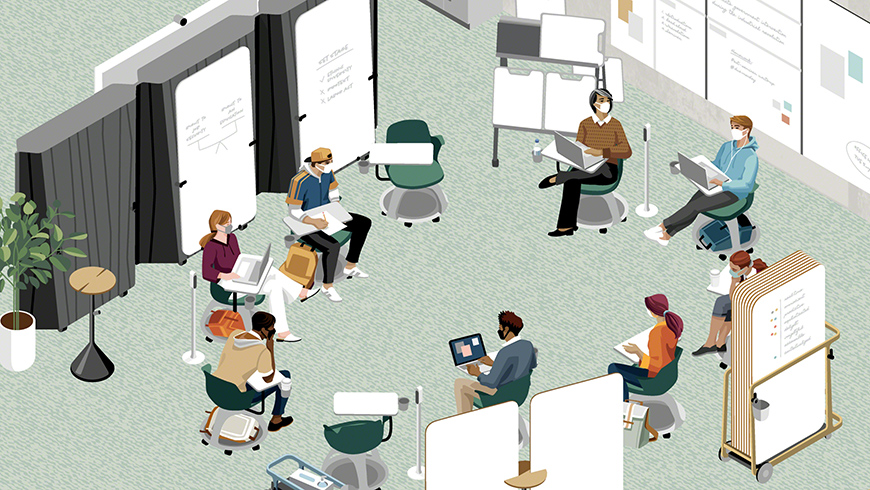
Location: Where should the pilot be located?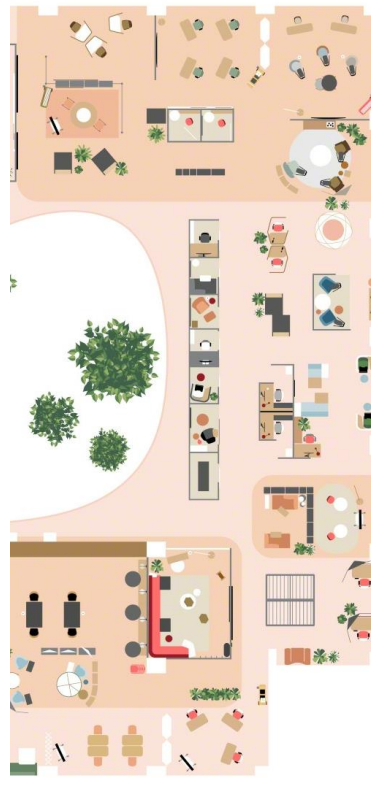
Choose a location intentionally to optimize the experience, access and use. Include the full range of spaces needed to support multiple work modes in close proximity, so users can easily transition between work activities.
Considerations:
- Visible and accessible to others. Ensure the pilot space is “on the path” to other people and spaces that the user group will need. Make it a focal point that others pass and want to learn about. A welcoming attitude and transparency are important to creating positive word-of-mouth marketing around the larger project.
- Proximity to leaders. Welcome leaders into this space and help them become champions of workplace change. Engagement of leaders is critical to the success of any pilot space. It’s helpful if the space is visible to leaders, offering opportunities for them to use the space and share their experiences.
- Build out the space fully. In addition to furniture applications, a pilot provides opportunities to test other things, like new technologies, processes and lighting. The users will need Wi-Fi, power options, good heating/cooling, etc. Avoid using a vacant or mothballed space for a pilot space as no one will want to use it and the results won’t be beneficial to anyone.
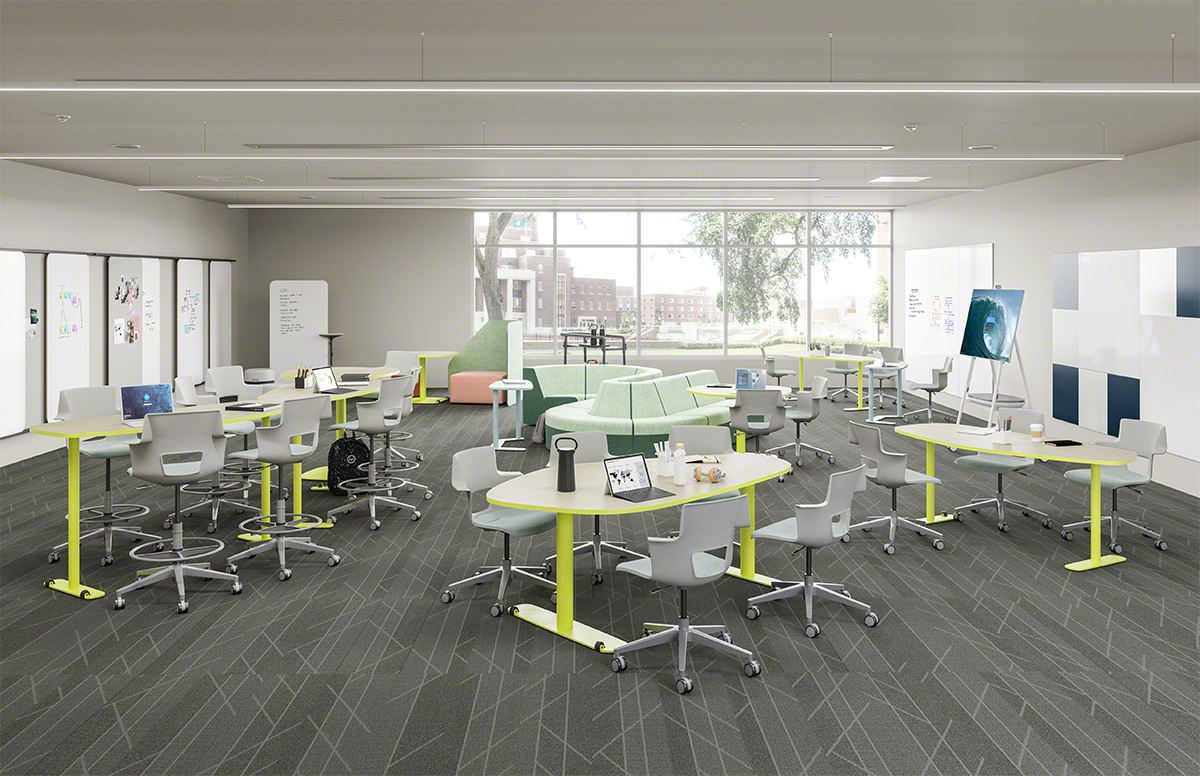 Pilot Length
Pilot Length
The length of your pilot depends on what you’re trying to learn. If you’re simply providing the opportunity for multiple people to experience a space and try out new technology, a few weeks might be sufficient. Or if your pilot targets a single space type — a proposed work café, for instance, a shorter period of 30 days or so can produce meaningful feedback.
For comprehensive pilots, the experience should last at least 90 days to allow adequate time to measure behavioral change. This is especially true for a pilot intended to test multiple work modes. If your pilot encompasses a range of spaces to support focus, collaboration, learning, socialization and rejuvenation for example, longer is better.
We Can Help
Whether you’re considering your first steps or launching a full-scale series of pilots, we can help you plan and implement a pilot experience. We can help build the strategy, furnish the pilot, make it affordable with financing options, create the experience, and measure the impact. Get In Touch
Check out the Steelcase whitepaper on Pilots + Prototypes: When the Workplace Becomes a Laboratory


